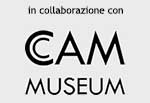The language of the moving image
Lacked very little to the discovery of America, when Leonardo da Vinci began his studies on the projection by means of lenses, developing his darkroom. It is the first step forward, since the Chinese shadows, in the application of the technique for the reproduction of moving images, even though we will have to wait for the 1600 to get to the magic lantern.
But it was only in 1800, with the Lumière brothers that we really reach mature age of the moving image. The cinema opens a profound cultural revolution, which after two centuries is still full, tumultuous implementation.
The advent of digital technologies, however, occurs within this revolutionary process as an element of further acceleration, and at the same time redefining its nature. The moving image becomes pervasive. And the boundaries between the various media are becoming increasingly blurred, not only in terms of distribution channels, but also in terms of production techniques.
The center of gravity of this cultural revolution, linked to the moving image, certainly was (and still is) television. It was the first visual media, thanks to a widespread distribution, that has reached a mass audience with his message, and it did so — in fact — absolutely pervasive: the television does not require a mobility action, such as cinema, but reaches everyone in his own home, and is constantly active (for decades now, the broadcasts are continuous, h24).
But by its very nature, television mainly determines the emergence of new forms of visual language; after the narrative or documentary film, a new grammar and new syntax of the moving image they see the light.
Not long after, especially when they come on the market the first portable video capture devices, also begins the artistic research, experimental and aesthetics, the tele-visual media — and thus, inevitably, on his language.
In its first phase, the video art is primarily perceptual experimentation: the artists work a lot on the distortion of the signal or image, exploring the possibilities of the medium beyond its conventional use. Or introduce the television medium in an artistic context, as it begins to make such Nam June Paik, conventionally regarded as the father of video art. From the second half of the 60s, on both sides of the Atlantic, artists such as Paik, Godfrey Reggio, Jasia Reichardt, Vito Acconci Wolf Khalen, working on / with video media, substantially destructuring its language. The gap between the two moments, it is still almost complete.
The television is a medium of language, no matter how innovative than in the recent past, however in a cast; video art while experimenting with new roads, without his visual language reverberates in any way the mass media of television.
The emergence of digital technology, however, is the factor of change, which is projected on the entire universe of moving images, revolutionizing deeply in all respects.
In cinema, the visual effects industry takes a great leap forward (from the famous Matrix bullet time effect, until an entire movie like Gravity), while the entire production process — from the first post-production, distribution and even then the shot — veers toward the use of digital technologies.
Even stronger and more evident, the impact on television, particularly visible in the use of overlays to great effect in real-time, and even — in recent years — in the creation of virtual sets or changing (think shows such as Superquark and Ulisse, or like Che tempo che fa and L’eredità *).
At the same time, the rapid growth of web casts a new actor on the scene, which in turn creates its own visual language, the rules of which extend beyond the media.
The extraordinary revolutionary power of digital, however, lies not simply in its effects on the production tools (hardware and software), but especially in the reductio ad unum of the final distribution technology; the convergence of different media it is inevitable consequence.
The binary encoding of any audiovisual content, then produces first overcoming traditional boundaries between different media (film, television, web), and then, consequently, their progressive hybridization.
Not forgetting, of course, that there is a fourth actor on the scene. That while using the television hardware for your final output, play a game of his own. It’s the video game industry, which now competes billed with film-making, and that increasingly approaches the realism of this, at the same time reinventing forms, including narrative, entirely new, thanks to the power of interactivity.
That is worth a mention here briefly a further technological innovation, video games which offer us an experience — albeit virtual — massive, or rather augmented reality. The availability in real time and superimposed over the image perceived by a flow of information data capable (of course) to increase our knowledge, and thus to influence our perceptual experience otherwise. And even if it is a predominant use is informative, it does not take much to imagine how it could intervene in the very near future, on the entertainment and — perhaps — even art (on the subject, cf. Augmented Reality Art, Springer, 2014).
There therefore is a complex process, in which different forms of expression using the moving image interact with each other on different levels. Cinema, television, video art, web, videogames, not only use the same production technology, as well as not simply use a distribution channel, based on the same technology.
These different forms of expression, each with its own language, its own grammar and syntax of the image, continuously overflows from its field, submitting to those of others, and contaminate one another.
In terms of graphic language, for example, web and television have developed a dialogue, made of reciprocal influences, particularly detectable in tv initials, in the commercial breaks, and — of course — especially in trend channels such as MTV.
This process of hybridization linguistics is for the time being concentrated mainly in the forms of expression of a commercial nature: film, TV, web, and video games. It remains on the edge video art that, as it should by its nature be in vanguard expressive languages, is penalized by its own non-commercial nature, and therefore in some ways even craft, when compared to industrial power who field the other.
Where the video art is able to invade other fields is, perhaps too obviously, toward the cinema. Although this interaction seems mainly marked by a predominance of film language. From Reggio video artist, which leads to the movies Koyaanisqatsi (a documentary film entirely without dialogue), the video artist Steve McQueen that goes on the first claustrophobic Hunger (on hunger-strike of Irish republican prisoners in the early 80s) and then 12 years a slave, recently awarded several Oscars.
Moreover, even among the visual arts, video art is still considered to be the daughter of a lesser god. Paradoxically, when you consider just how the moving image is instead an element so present in the social landscape. With the sole exception perhaps of Bill Viola, whose works are now almost real film productions (think to The Raft), video artists for the art market is almost entirely prevented, and the same movement of video art — although it is undoubtedly growing — remains marginal, without being able to get to the mainstream media.
Strongly present on the web, even if through niche channels, is largely absent from television, even within programs and channels devoted to art. And this gap will maintain this separation, while it prevents the video art of reaching the general public, on the other hand creates a barrier that prevents glare of aesthetic research and experimental language — typical of art — on the entire universe of the moving image. On the ability — or not — to overcome this barrier, we play a game designed to influence the visual language of the coming decades.
* All programs of italian televisions[
Enrico Tomaselli / 2019-12-01]
<< back



